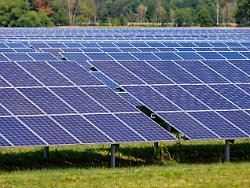Monday 11 October 2021
Ready, but not connected to the network
Many solar systems are waiting to be commissioned
A little less than half of the German electricity mix comes from renewable energies – and it could be even more. The solar association complains that although many systems are finished, they should not be connected to the grid. The reason is waiting times for certification procedures.
In Germany, according to the German Solar Industry Association, many solar systems that have already been completed are not yet connected to the grid. The reason why the climate-friendly electricity could not be fed in was a bottleneck in the certification company, said Carsten Körnig, general manager of the association, the “Augsburger Allgemeine”. “The waiting times are sometimes up to a year.”
Körnig criticized the fact that the limit above which a system requires a certificate has recently been reduced from 1 megawatt to 135 kilowatts. “The certification now affects a much higher number of systems as well as planning and installation companies.” The effort was “clearly underestimated” on all sides. The limit of 135 kilowatts is “clearly too low”.
TÜV Süd, as one of the certification companies, confirmed the longer duration as a result of the more complicated approval. “At the moment we experience it relatively often that our customers have to improve their documents during the ongoing certification process so that we can confirm conformity with the grid connection rules,” said TÜV. This leads not only to the operators, but also to the certifiers, in a considerable amount of additional work.
In the first three quarters, the share of renewable energies in the German electricity mix decreased. It is not the long certification procedures for solar systems to blame, but the weaker wind conditions in particular. The Center for Solar Energy and Hydrogen Research Baden-Württemberg (ZSW) and the Federal Association of Energy and Water Management (BDEW) announced that they had reduced the share to around 43 percent after 48 percent. A lot of sunshine and the continuous expansion of photovoltaic systems, on the other hand, would have resulted in 7.8 billion kilowatt hours of electricity being generated by photovoltaic systems. This is eleven percent more than in the strongest month to date, June 2019, with 7 billion kilowatt hours.
